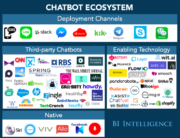Without a doubt, today’s business environment is incredibly competitive. And one of the most important aspects of every business is its workforce. Hiring and managing staff, which includes a contingent workforce, is vital to the overall success of your company. Get it right, and you’ll likely end up with a profitable and sustainable organization. But get it wrong, and you may be sitting with staff with too many skill gaps making it difficult to keep up with competitors.
So, how do you go about ensuring the more favorable outcome of the above scenarios? If you’ve determined that outsourcing is truly beneficial for your business, then you’ll need the right partners and tools for the job. Ideally, you’ll partner up with a Managed Service Provider (MSP) and utilize a Vendor Management System (VMS) to handle your contingent workforce.
At C.Soluxions, we have experience with MSP & VMS and will briefly explain what both entail below.
A Business Case For MSP
Hiring and managing a contingent workforce often overwhelms companies that try to handle all this internally. Consider that many large enterprises have already partnered up with Managed Service Providers (MSPs) for their outsourcing needs. With the ongoing need for digital transformation, 66% of companies are planning or positioning themselves to become the new market leaders.
These companies are aiming for greater revenues, lower costs, producing better products, and increasing their quality of service. To achieve all this, they need to attract and retain talented workers, some of which will be full-time staff while others are contractors and freelancers. Furthermore, it has become increasingly important for the contingent workforce to possess valuable IT skills.
MSP In A Nutshell
The introduction of MSPs has massively curtailed the risks associated with outsourcing and hiring those with specialized skills. An MSP is a company that handles contingent workforce management on behalf of its clients. It also handles analytics and reporting, billing, program adoption and compliance, supplier management, and order fulfillment.
The cost-savings that come with using MSPs are impressive. Companies can expect savings of between 8% and 15% of their management spend in the first year alone for both Staff Augmentation and Services procurement (SOW).
Power and Efficiency With A VMS
A VMS is an online application, usually cloud-based, which automates various contingent worker processes such as consolidated billing, procurement, and payment. Several of its key features include analytics, costing, time tracking, candidate submissions, evaluations, onboarding, offboarding, order creation, and distribution.
It is usually the responsibility of the MSP to select the VMS and maintain the contract. MSP can properly configure and optimize the VMS making it even more efficient than it already is. In addition, they ensure that the client does not have to deal with day to day management of the tool. Companies can tap into these powerful features by contracting a VMS solution provider directly to save cost in cases when the spend greater than $100 million and above or there will be multiple MSPs in the same instant of the VMS.
The tool can be optimized with integrations into procurements systems and onboarding/offboarding provisioning systems. The integration enables system access aligned with contract end date which provides reduced risk for cyber security. Integrations also result in reduced administrative overhead and delayed costs for onboarding workers. Integration into HCM systems results in better workforce planning.
The Bottom Line
Appointing an MSP to handle contingent workforce management and a VMS on your behalf makes good business sense. The cost and time savings are considerable and this frees up valuable resources for other areas of your business. Moreover, this also reduces the risks associated with hiring staff with technical skills. Contact us today to find out how MSP and VMS will benefit your business.
Image: Wikimedia Commons
















